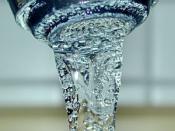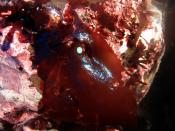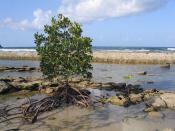Twice each day, the sea level rises at high tide and floods the area with salty water. Waves crash forcefully onto the shore. As the tide falls, living things are exposed to the hot sun, drying winds, fresh water rain, or icy frosts. Added to all of this are also the changes of night and day and the yearly cycle of the seasons. Animals that live in these habitats need and have specialized adaptations, and because of this, would not be able to live or survive anywhere else. An example of an animal with a specialized adaptation is a shore fish like the minnow. They have tough, rubbery, slippery skin that prevents damage by waves and rolling pebbles. Sea plants also need adaptations. Plants along the coast consist mainly of algae called seaweed. Algae are important because it provides most of the oxygen supply and it takes in huge amounts of carbon dioxide.
If it weren't for algae, we would pretty much not be able to breathe. Algae and seaweed are not like other plants though, they do not have roots but they have things that are similar and cling to the surface of rocks so that they are not swept away by waves. Also seaweeds have leaf-like fronds, with tough, slippery surfaces that would not be torn by waves or dried out by the sun. Most seashore animals have not adapted to the 24-hour day. Instead they have adapted to a 12-hour cycle. Some animals like crabs, shrimps, prawns, and sea snails have all adapted to being active at high tide and then they all hide for low tide. Some animals stay under the mud or sand. They include shellfish like scallops, cockles, and clams. As the tide comes in they extend fleshy tubes called
siphons. Shellfish suck in...


